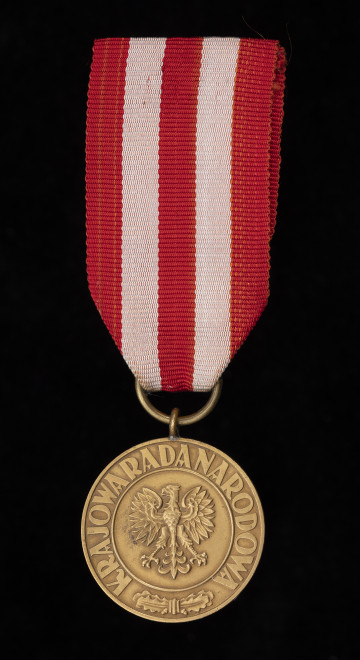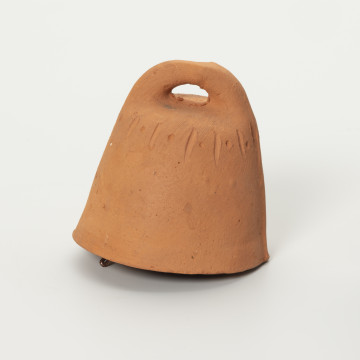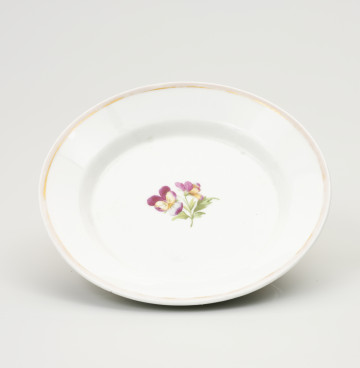
Victory and Freedom Medal
1946 — 1989
National Museum in Szczecin
Part of the collection: Souvenirs of Szczecin pioneers
Helena Kurcyusz (1914-1999), a Polish architect and urban planner, graduate of the Faculty of Architecture at the Warsaw University of Technology, was one of the individuals who made an organisational effort on the lands acquired by Poland at the end of the Second World War along the Oder and Lusatian Neisse rivers. During the Second World War, she was involved in the defence of Warsaw, and then in the resistance - the Union of Armed Struggle and the Home Army. In 1942 she was arrested and transported to the concentration camp at Majdanek, from where in 1944 she was moved to Ravensbrück and subsequently to Neubrandenburg, where she finally lived to see liberation. On her way back to Poland, Kurcyuszowa, together with camp comrades she knew well, arrived in Szczecin, from where they intended to continue their journey together to Piła, where the seat of the Polish authorities was located. On arrival, however, it turned out that the condition of one of her companions, who had already fallen ill along the way, had become significantly worse. Her condition was so serious that the women decided to stay in the town, finding shelter in an abandoned house in the present-day district of Gumieńce. In the meantime, another one of her friends also fell ill. Kurcyuszowa, assuming that both of them had contracted spotted fever, decided to stay longer in the town and take care of them. In a running military hospital, she managed to get help from a German doctor, who not only confirmed her suspicions but also prescribed cardiac drops. Due to the steadily deteriorating condition of her comrades, Kurcyuszowa contacted the first Polish doctor working in town, Dr Zygmunt Jakubowski was the doctor who referred them to a hospital, where they recovered after a few days. As a memento of those events, Kurcyuszowa kept the bottle of cardiac drops prescribed by a German doctor and manufactured by the CIBA chemical company in Pabianice. This object, along with other personal possessions, was donated to the collection of the National Museum in Szczecin after her death in 1999. Anna Lew-Machniak
Author / creator
Object type
apothecary bottles
Technique
form blowing, wytłaczanie
Material
glass, cork, paper
Origin / acquisition method
donation
Creation time / dating
Creation / finding place
Owner
Muzeum Narodowe w Szczecinie
Identification number
Location / status

1946 — 1989
National Museum in Szczecin

1951 — 1999
National Museum in Szczecin

1913 — 1930
National Museum in Szczecin
DISCOVER this TOPIC
National Museum in Lublin
DISCOVER this PATH
Educational path